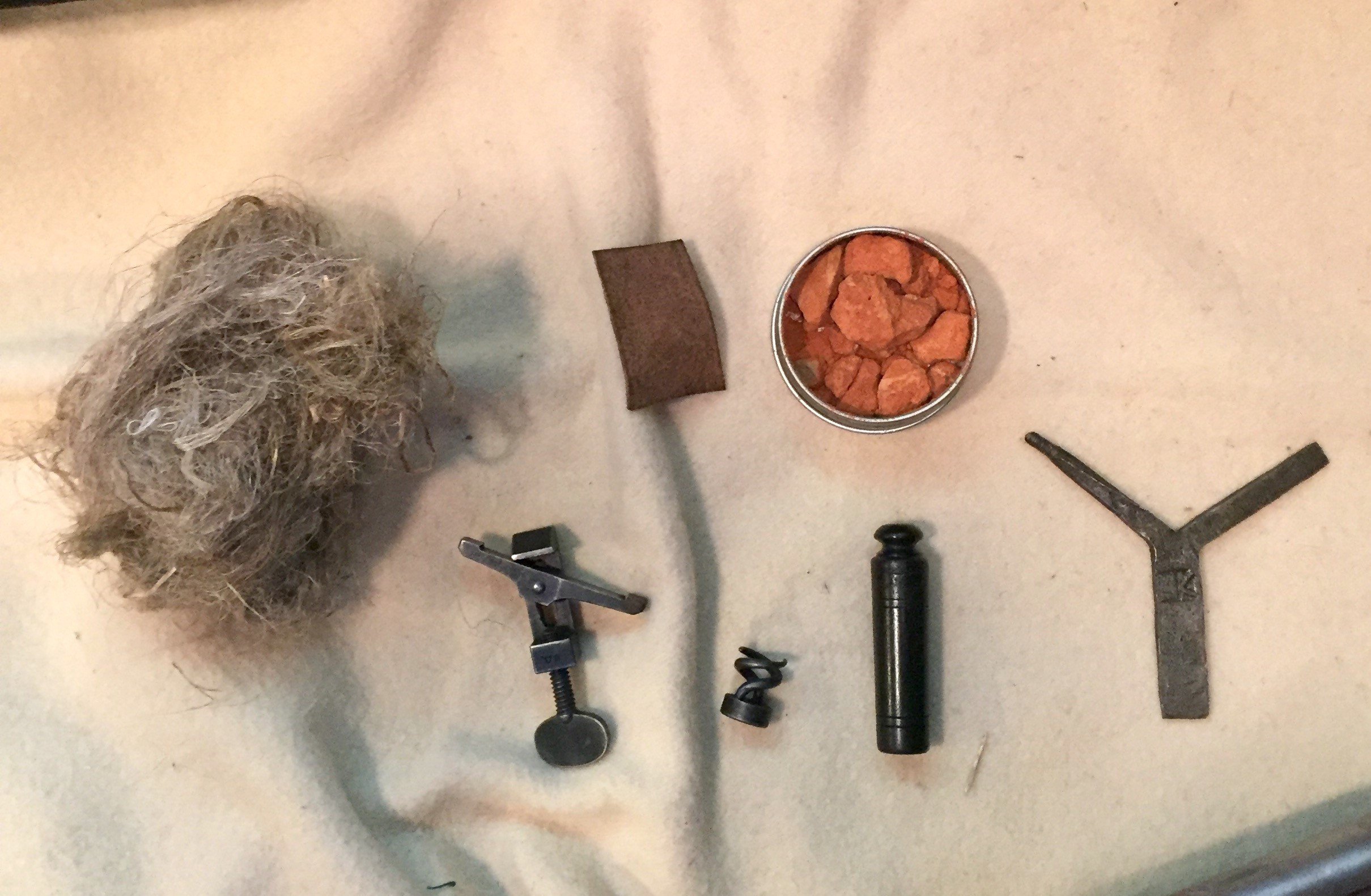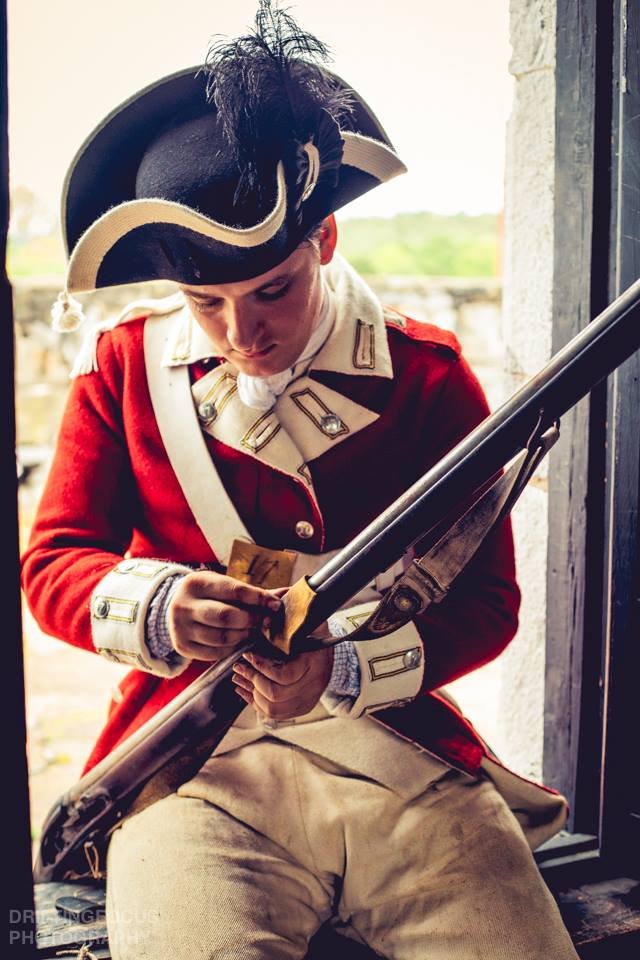Arms and Equipment: Cleaning the Firelock, part 1.

The best and in-depth treatise on cleaning arms is the works put together by John U. Rees, published here: https://www.scribd.com/document/292985859/The-Care-and-Cleaning-of-Firelocks-in-the-18th-Century-A-Discussion-of-Period-Methods-and-Their-Present-Day-Applications
This will be beginning of a series on the blog, highlighting the practical application and use of period techniques for maintaining arms and equipment. Today’s post focuses on having the essential tools you need to keep your firelock clean.
Turnscrew: of the “Y type” is the more commonly found tools, and provides two blades for different sized slots. Reproduction by Jymm Hoffman: http://www.hoffmansforge.com/
Worm: An essential tool, threaded to fit the threaded end of the ramrod, is the tool use to attach tow, or small bits of rag to clean the inside of the barrel.

Hand-Vise, or Spring Vise: This particular example is a 19th century vise made for use various muskets and rifled muskets. Similar to others from earlier, though there may have been various types, this type is commonly reproduced. This tool is an extremely important device for “taking the lock to pieces”, an occasional, in depth cleaning of the lock. Trying to disassemble a lock without can result in cracked springs and other damaged parts.
Oil Bottle: A container turned from Horn by Erv Tschanz(http://www.gennisheyotrading.com/), for holding sweet oil for oiling parts for lubrication and rust prevention.
Tin Bottles designed from originals are also available from http://www.hotdiptin.com/
Brick Dust: Stored in a small tin, are several chunks of 18th century bricks, from demolished buildings of Salem County, NJ. The tin makes using the brick dust very convenient and easy.
Scraps of Leather: Having a leather shop, I have quite a bit of scraps of various leathers. I like to have a small scrap of 2-3oz vegetable-tanned leather in my cartridge pouch at all times. Keeping one scrap as the “applicator pad” and the other as the “final polish” is another approach. Many leather supply companies sell scrap bags.
Tow: Loose fibers before being further processed and spun into threads and woven. As simple as it gets, great for use with the worm and final wipe-down. Linen scraps/rags also work well for most purposes. https://woolery.com/flax-tow-1-lb.html
That’s it for this installment. Next time I’ll be discussing how to easily use these items to keep your firelock clean and ready for service in the field.
Andrew Kirk


